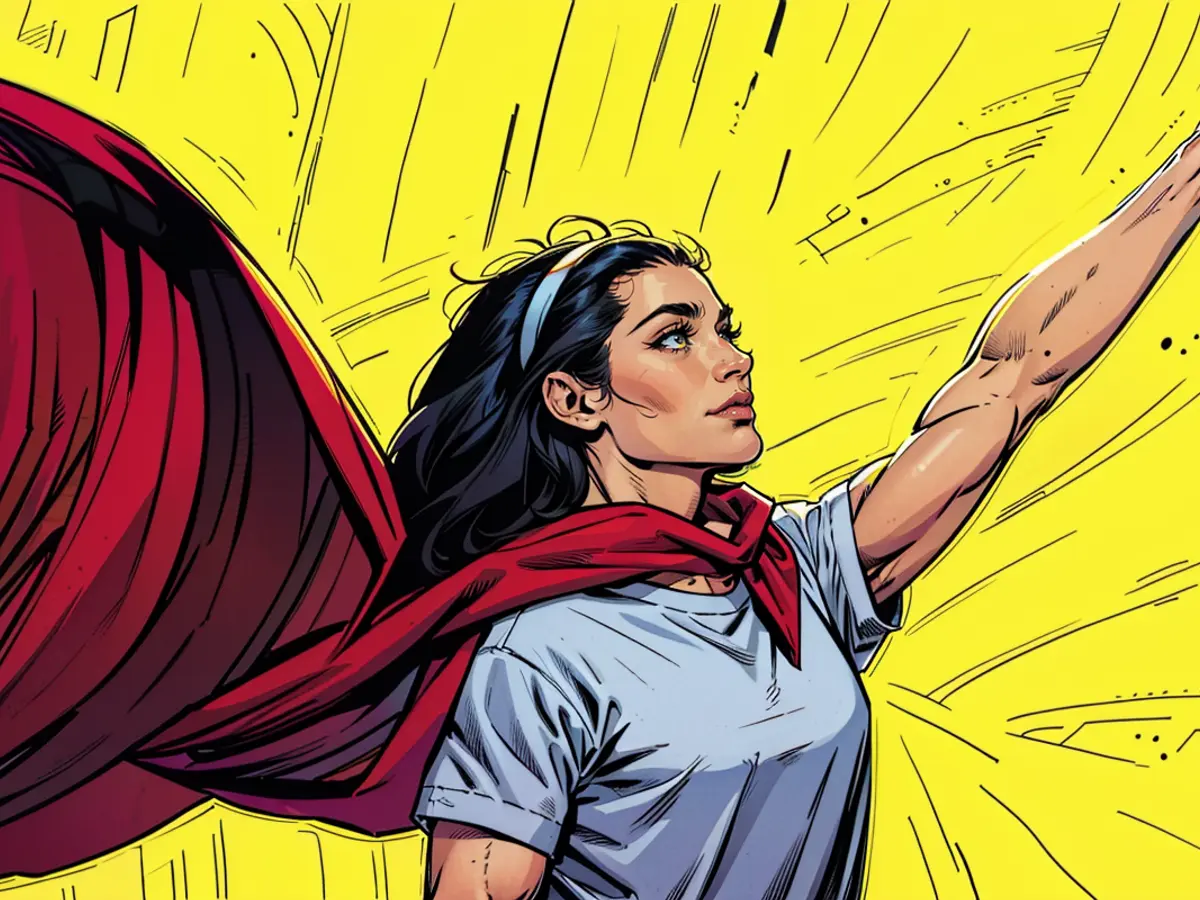Superkraft ChatGPT
Anyone who thinks AI is only for specialists will be enlightened by "Superpower ChatGPT". The book makes it easy for anyone to get started with working on the OpenAI-Chatbot and shows how to effectively and efficiently use the virtual assistant like a pro.
Some people are hesitant to use AI tools because they think it's too complicated and only for specialists. However, this is not true. The foundations of artificial intelligence are indeed complex, but interacting with chatbots like ChatGPT requires only trust. "Superpower ChatGPT: AI made simple & safe for text, images & office" by Oliver Bock and Florian Knust demonstrates how simple it is to effectively use the AI assistant in profession, hobby or daily life.
The size of the book with 220 pages is not intimidating and one doesn't need to take a vacation to finish it. The authors promise: "We promise you: In just three days, you'll be an AI pro!"
Simple Entry
No prior knowledge is required. The book first explains how to use ChatGPT on a PC or smartphone, how to create an account, and which subscription is recommended. Spoiler: The free version is suitable for the first steps, but the authors recommend ChatGPT Plus - after all, the goal is to use the chatbot like a pro. The subscription costs approximately 22 Euros per month including taxes.
Then, the authors explain the basics, i.e. how to give ChatGPT text instructions, which are called prompts. To make it easier to understand, they work with large graphics. QR codes lead directly to prompt examples on ChatGPT. This not only makes it easier to understand what's going on, but also allows users to work with the templates.
It takes courage to try something out, and that's the most important step. Bock and Knust then show, through entertaining examples, how a simple prompt can look, how to write comprehensive instructions, and how to refine them.
Clear Rules and Cheat Sheets
Next, one learns how to proceed purposefully, i.e. as precisely and clearly as possible, to describe what one wants. To "prompt perfectly", readers receive a "P.R.O.M.P.T.-Framework": P stands for the prompt goal, R for the role the AI should take, O for the expected output, M for the people the target audience is. P stands for presentation, i.e. how the answer should be presented, T for the tone ChatGPT should use.
For further deepening, concrete examples follow. In addition, the authors provide an overview (CheatSheet) for download to be able to refer to it whenever something is forgotten. Even better: Florian Knust provides a tool called "Super-Prompter V2.1" which users can use to develop an optimal prompt interactively or optimize their inputs.
From Rough to Fine
Starting from page 44, the learned knowledge is refined. For example, one learns what the icons under the ChatGPT responses mean and what one can start with, what additional settings are available, or how the bot can be individually configured. One also learns what ChatGPT can do besides that, such as analyzing data and graphically representing it.
It is important for authors to show what the Bot cannot do. This includes having real-time information, as ChatGPT's data base is several months old. The book explains how to solve this problem by making the Bot browse the internet to fill in knowledge gaps.
Similarly, the book describes in a structured and understandable way how to generate images with prompts in ChatGPT. A prerequisite for this is the Plus variant, as the free version does not contain the necessary program DALL-E. Conversely, one also learns how to analyze images with ChatGPT and use the results. For example, the authors let the Bot take a look in the refrigerator and then suggest recipes based on the recognized ingredients.
Application examples and practice prompts
If you have found a taste for ChatGPT, the chapter with ten application examples is particularly interesting. Here you learn, for example, how to train the Bot to make its answers sound more like your own. You find out how to let ChatGPT help you plan your daily routine or write emails for you.
The examples for imitation are quite professional and will cover enough ground for many users. However, those who want to dive deeper can do so at their own cost. For example, one learns how to create CustomGPTs that are specialized for certain tasks. A CustomGPT is introduced in the book under the name "Super-Prompter V2.1".
There is not only ChatGPT
The book then gives an overview of Google Bard, Microsoft Copilot and other ChatGPT alternatives. The authors also present their favorite AI tools, which can process videos and music, among other things.
At the end of the book, readers find 50 practice prompts, which are concrete examples that cover a wide range of topics. They can also be considered templates that can be adjusted to meet individual requirements.
They are divided into ten categories, from Marketing to Play & Fun, have been tested, and should fully exploit the potential of ChatGPT. The entry is always an P.R.O.M.P.T.-Framework, which allows you to understand and deepen what has been learned before.
Conclusion
"Superpower ChatGPT: AI easily & safely for texts, images & office" promises the authors that even beginners can become proficient in prompting after a few days, at least almost. The book is excellently structured and easy to understand, with excessive technical jargon being consistently avoided. The entry is easy and one can decide how deep one wants to dive into the topic. This can go quite deep, besides beginners, experienced AI users are also attracted.
This book, "Superpower ChatGPT: AI made simple & safe for text, images & office," is a valuable resource for anyone who is hesitant about using AI due to its complexity. It demonstrates that interacting with chatbots like ChatGPT doesn't require specialized knowledge, making it accessible to anyone. The book's author's promise that users can become AI pros in just three days, demonstrates the effectiveness of their teaching methods.
Artificial Intelligence, as a field, is complex, but the application of AI tools like ChatGPT, particularly through ChatGPT, is made simpler by this book. The authors provide clear instructions on how to use ChatGPT, from setting up an account to writing comprehensive prompts, and even provide a cheat sheet for easy reference.
Moreover, the book also covers the use of AI tools like Google Bard and Microsoft Copilot, as well as providing 50 practice prompts for users to test their skills. This extensive coverage of various AI tools makes this book a comprehensive resource for anyone interested in using AI in their daily life, profession or hobby.
Despite the everyday use of technology, many people are still skeptical about the use of Artificial Intelligence. However, with the help of resources like this book, these apprehensions can be overcome, and the immense potential of AI can be explored.









